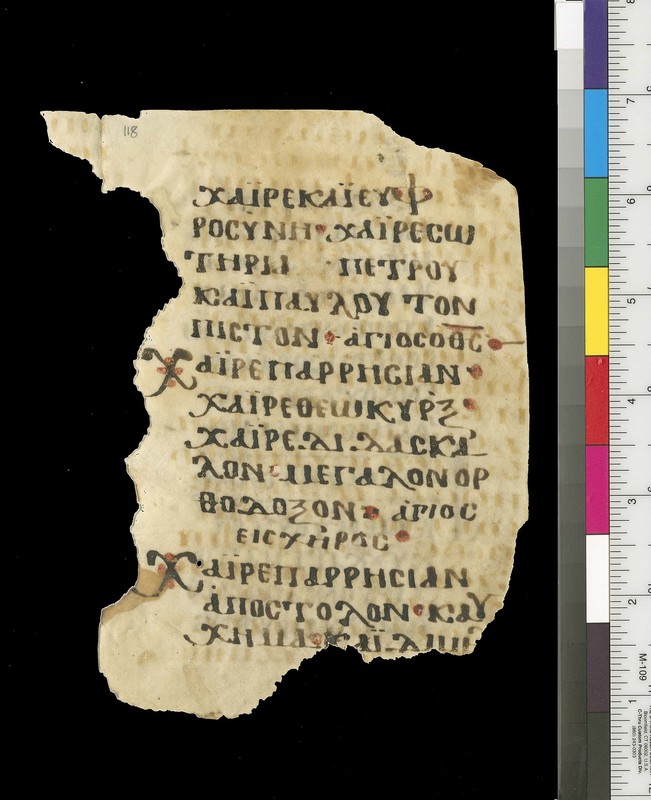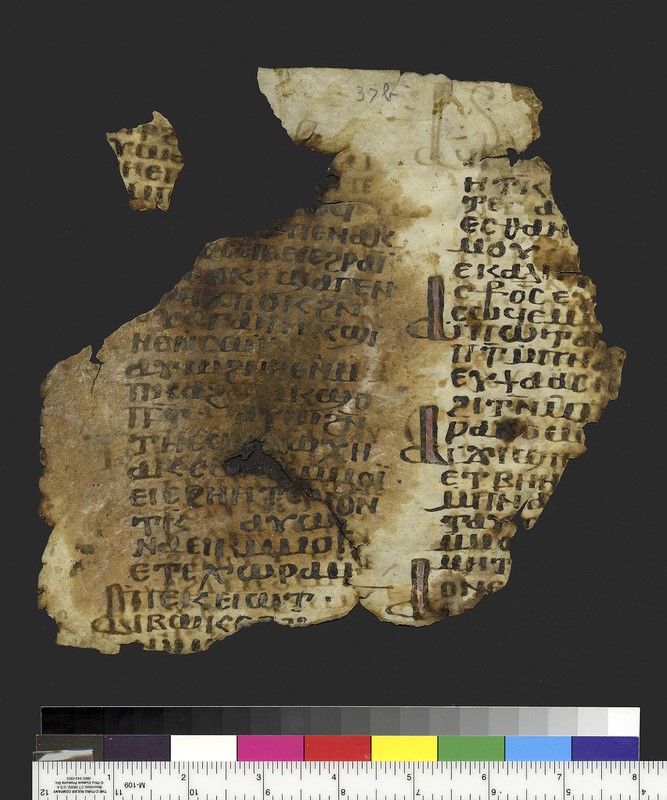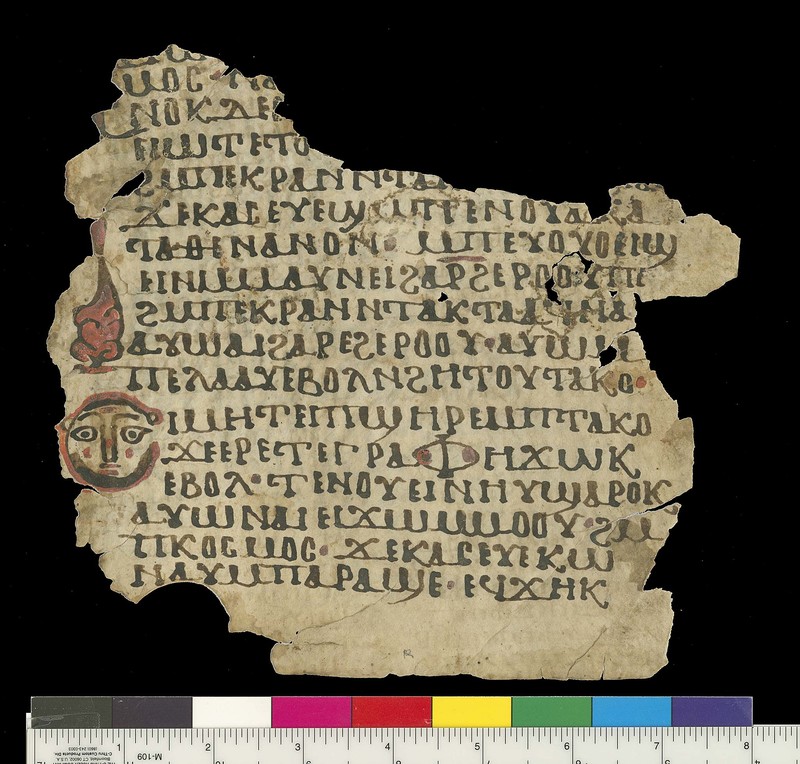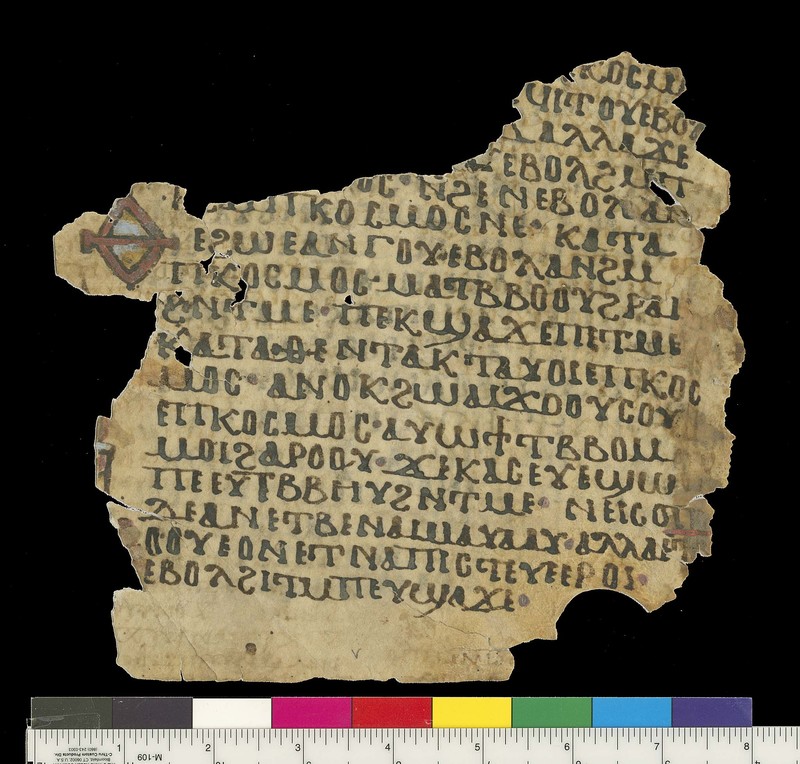Palimpsests
In the ancient world, writing material was expensive and often hard to find. Therefore, ancient scribes sometimes scraped older parchment manuscripts in order to add new texts. Such manuscripts are called "palimpsests", from the Greek παλίμψηστος (scraped again). The underwriting of palimpsest manuscripts is usually hard to decipher with the naked eye and often requires special photographic techniques to be read.
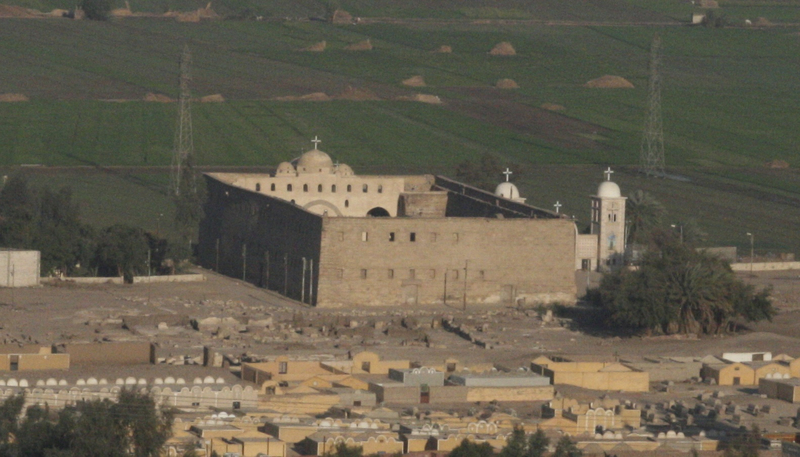
Works of Shenoute of Atripe
Opening Exhibit Lectures by Frank Feder & Alin Suciu

